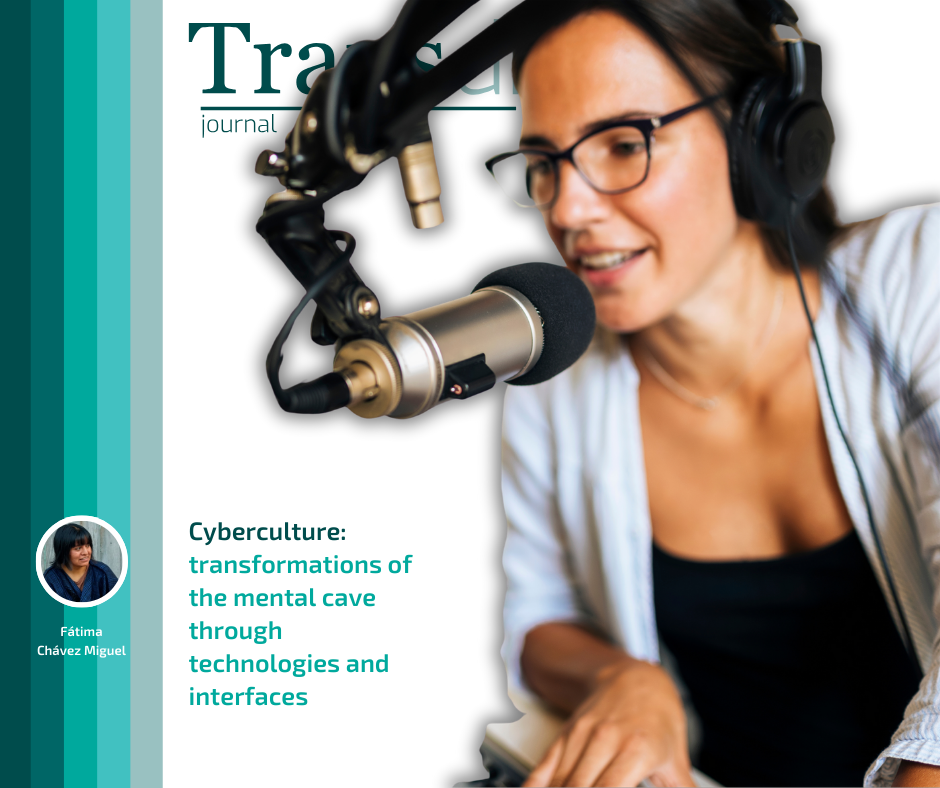Cyberculture: transformations of the mental cave through technologies and interfaces
DOI:
https://doi.org/10.56162/transdigital284Keywords:
participatory culture, interface, cyberculture, network communication, epistemic practicesAbstract
Virtuality occupies a geographically dispersed area throughout the world. Those who adhere to it through text, image and audio interfaces are inserted into cavernous forms that allow them to be where bodies live and connected to the cloud. In an economy of dematerialized goods and services, the emergence of the podcast and its hybrid, the video podcast, are potentiating the distribution of marketable content in the internet ecosystem where stories are told and consumed. The available technologies and interfaces are transforming the social construction of users, making the interaction between content producers and consumers increasingly more participatory, moving from screen to screen, from one platform to another, for sharing information in different formats. The investigation presented here emphasizes the participatory culture encouraged by the hosts-facilitators of the video podcast, who give to the great laboratory of ideas that is the Internet, epistemic practices that enhance the community-communication-knowledge triad.
References
Brinkley, I. (2006). Defining the knowledge economy. The Work Foundation. Research paper.
Castells, M. (2001). Internet y la sociedad red. La factoría, 14(15), 1-13.
Castells, M. (2004). La era de la información: economía, sociedad y cultura (Vol. 1). Siglo XXI Editores México.
Castells, M. (2010). Globalización e identidad. Quaderns de la Mediterrània, 14(2010), 254-262.
Castells, M. (2013). Comunicación y poder. Siglo XXI Editores México.
Echeverría, J. (2013). Entre cavernas. De Platón al cerebro, pasando por Internet. Triacastela.
Jenkins, H. (2006). Fanáticos, blogueros y jugadores: explorando la cultura participativa. Prensa NYU.
Jenkins, H. (2008). Convergence Culture La cultura de la convergencia de los medios de comunicación. Paidós.
Jenkins, H. (2012). Cazadores furtivos textuales: aficionados a la televisión y cultura participativa. Rutledge.
Lévy, P. (2007). Cibercultura: informe al Consejo de Europa. Editorial Antropos.
Orús, Abigail (21 de junio 2023a) Tamaño del mercado del podcast a nivel mundial entre 2021 y 2030. Statista. https://es.statista.com/estadisticas/626499/oyentes-de-podcast-a-nivel-mundial/
Orús, Abigail (27 de marzo 2023b) Tamaño del mercado del podcast a nivel mundial entre 2021 y 2030. Statista. https://es.statista.com/estadisticas/1267647/tamano-del-mercado-global-del-podcast/
Orús, Abigail (3 de julio 2023c) La industria del podcast a nivel mundial- Datos estadísticos. Statista. https://es.statista.com/temas/8618/la-industria-del-podcast-a-nivel-mundial/#topicOverview
Scolari, C. (2013). Narrativas transmedia: cuando todos los medios cuentan. Duesto.
Scolari, C. (2014). Narrativas transmedia: nuevas formas de comunicar en la era digital. Anuario AC/E de cultura digital, 1, 71-81.
Scolari, C. (2017). El translector. Lectura y narrativas transmedia en la nueva ecología de la comunicación. En La lectura en España: informe 2017, 175-186. Federación de Gremios de Editores de España.

Downloads
Autor de correspondencia
El autor de correspodencia se identifica con el siguiente símbolo: *Published
How to Cite
License
Copyright (c) 2023 Fátima Chávez Miguel

This work is licensed under a Creative Commons Attribution 4.0 International License.
All articles in Transdigital are licensed under a Creative Commons Attribution 4.0 International License. Authors hold the copyright and retain publishing rights without restrictions.









